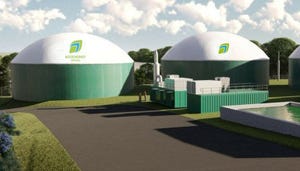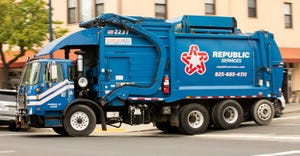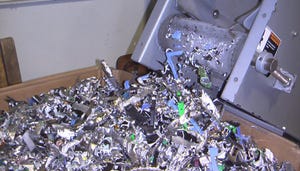Experts Weigh in on Clean Technologies, Employee Programs on Food Waste in New Study
A new study from the Journal of Hospitality & Tourism Research helps provide an understanding of the role of clean technology in food waste reduction goal setting.

Food waste is a continuing problem all over the world and is a hot topic among the waste industry and policy makers. Different areas are attempting to mandate methods to prevent food waste while independent companies and businesses are working to limit their food waste output as best as they can. To help reduce food waste, on-site food service companies are turning to different technologies which are helping them achieve sustainability goals.
On-site food service companies come in and provide institutional food service to facilities that do not have expertise in this area, such as education, sports, government, assisted living, etc. With the threat of food waste, the three highest-grossing companies, Compass Group, Aramark, and Sodexo, have recently committed to combat food waste issues and implement food waste reduction goals and clean technology to increase the traceability and measurement of food waste.
After implementing clean technologies, Compass Group estimates it has cut 2,900 tons of greenhouse gas emissions and saved more than 650 tons of food in 2020.
A new study from the Journal of Hospitality & Tourism Research helps provide an understanding of the role that clean technology plays in food waste reduction goal setting and achievements in companies using clean technology. Clean technology is a concept defined as “technology that lowers the pollution level” which includes food procurement software, food waste tracking systems, and food composting technology.
The study spoke with 16 experts in the food industry and found that clean technology adoption can help companies zero in on organizational food waste reduction goals and make those goals more specific. The study also found that clean technology reduces psychological distance by meaningfully quantifying and visualizing specified goals.
However, the findings in the study reveal that employees may fear that clean technologies could lead to a penalizing mechanism used against them. To combat this, experts believe that inner-organizational collaboration is critical to achieving sustainability goals and offsetting the double-sided nature of clean technology. This led to the creation of the SMART goal-setting model to achieve better results.
Industry veterans feel that, after setting goals, the success of those goals is largely determined by an employee’s ability to link their day-to-day jobs with a company’s sustainability goes. This starts a trickling effect of employees not being able to convert goals into concrete action plans, leading to goal ambiguity and lack of employee involvement. This is where the SMART (specific, measurable, achievable, realistic, and time-related) goal-setting model came to be. By applying the five criteria of SMART, on-site food service companies can set out a clear road map for employees and managers.
After the data collection and interviews, the study produced several significant findings with clean technology. The first is that clean technology helps corporations achieve a SMART approach to goal setting. This is done through the ability of clean technology to enhance the measurement, quantification, and traceability of food waste in the whole food and beverage operations and processes and making a clear path to sustainability for employees.
Secondly, the study states that goals set up with the SMART approach affect members of the organization by reducing psychological distance to corporate sustainability goals. Decreasing temporal (urgency to manage food waste), hypothetical (probability of a food waste problem affecting one’s and one’s unit’s performance), and social (how members of an organization perceive they can contribute to the corporate-level food waste reduction goals) distance can set up employees to succeed with a clear path to achieving a company’s goals.
Third, clean technologies affect management and employees differently. Managers can seek to remove barriers and develop strategic action plans to get employees on board with organizational food waste reduction goals, but employees could face increased fears of penalties associated with poor waste management and reduced performance.
Finally, after the interviews with each expert, it was consistently found that unless both managers and employees collaborate to achieve waste management goals, it is challenging to achieve food waste reduction and sustainability goals.
The study shows us something that we largely already know in terms of waste reduction, it’s going to take a village. But the study does show us with proper procedures, a detailed plan for each moving part of a company, and utilizing programs like SMART can help companies reach sustainability goals starting on the front lines and moving up the chain. These methods in combination with clean technologies can prevent hundreds of tons of food waste across the industry.
About the Author(s)
You May Also Like


